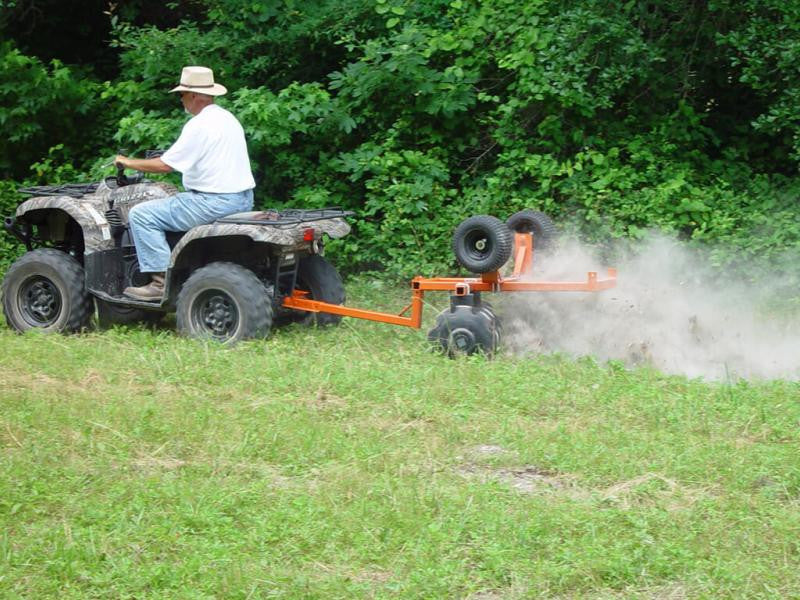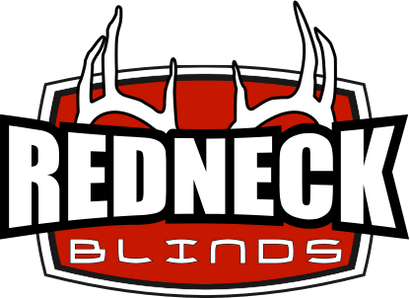hunting-blinds
stands

The Blue Collar Food Plot
7 min read
Food plots have been all the rage with deer hunters for over a decade. If you turn on TV and watch a hunting show, you will probably see someone hunting whitetails over a food plot. Most of the food plots that show up on TV are far from your average food plot. Most TV food plots are as green as a Leprechaun’s thumb, the size of a Major League Baseball field (or larger), and are as groomed as a golf course.
Although this type of food plot looks great and attracts deer, large food plots are expensive, require lots of equipment and knowledge to maintain, and aren’t always practical for the average hunter.
Almost every hunter I know from the guy with five acres to the guy with 550 acres wants to plant a food plot, but after seeing the gorgeous food plots on TV, many of them give up realizing they can’t build such a plot. If you are a hunter who wants to build a food plot but don’t have the time or resources to build a monster plot, realize there is hope for you!
The Small Food Plot Advantage

According to Steve Scott, of the Whitetail Institute there are several advantages to building a smaller plot.
“For the hunter who has a small budget and doesn’t have much land, building a small plot is a great option. It doesn’t take much time or money to build, doesn’t require much equipment, and let’s face it: killing a buck in a small food plot is often easier than killing one in a large plot. In a small food plot, hunters can often shoot across the entire food plot with a bow or gun. With a large food plot, hunters need to have a gun in their hand if a buck steps out into the middle of it,” Scott said.
Small food plots are the perfect killing plot for bowhunters and gun hunters. One of the biggest advantages of a small food plot, according to Jeff Best from Best Outdoors in Michigan, is cost. Best makes his living selling food plot equipment like seeders and cultipackers.
“Large food plots are very expensive to put in, often require large amounts of lime, fertilizer and seed. All three of those things can be very expensive. One bag of food plot seed will take care of a small plot. A smaller plot doesn’t require as much fertilizer and lime as a large one,” Best explained.
Do the Job Right the First Time
If planting a small plot sounds like a good idea and you are going to plant a small plot mainly because you don’t own a large chunk of land or have much money to spend, you must get the job done right the first time. The last thing you want to do is make a mistake during the planting process and spend lots of money on seed and have to plant again. The first thing you must do is have a pH test done.
“Many people make their first mistake by not having an initial pH test done. The pH of the soil is very important. If the soil is acidic it will need lots of lime so the fertilizer can do its job. Many hunters throw down some seed without checking the pH and the plot doesn’t really grow as a result,” Scott noted.
Many companies, including Whitetail Institute, sell pH test kits. For a small fee, they send you a test kit. You fill a small bag with dirt and send it back for testing. After the soil is tested, the company will send you a letter or email informing you what type of seed will grow best in your soil and tell you how much lime you will need to put down to bring your pH level up to where it needs to be.
After your soil is tested, you need to clear all weeds from the area to be planted.
“When planting a small food plot, the easiest way to eliminate weeds is to mix up a small batch of roundup and spray. A small sprayer doesn’t cost much money and spraying can do wonders,” Scott suggested.
Get Your Hands Dirty
When the weeds are gone, it is time to break up the soil.
“There are a variety of seed blends on the market designed for the person who has a small budget and no farm equipment. These blends are designed to grow almost anywhere. There is one hitch though: in order for the seed to grow, there must be good seed to soil contact. For that to happen, the soil must be busted up. “With a small food plot, a few friends and few rakes can work well breaking up the soil. If that is all a person has, it will work,” Best said.
Another option is using an ATV or small lawn tractor with a tiller or disc. “Even dragging an old wooden pallet behind a garden tractor will work, especially if some large nails are hammered into the bottom of the pallet that can tear up the soil,” Scott suggested. However, you do have to make sure soil is exposed and then it is time to seed. A seeder is relatively inexpensive for most seed types.

After the seeding is complete, Best suggests using a cultipacker to make sure the seed is in contact with the soil, not just sitting on top of the soil.
“We sell lightweight cultipackers that can be filled with sand or water that are extremely durable and reasonably priced. A cultipacker can make the difference between a plot taking off or turning out so-so,” Best noted.
What to Plant
The biggest problem when planting a small food plot is deer will often love the food plot to death after the plot starts to grow. There are a couple ways to reduce this problem to ensure that the food plot is lush and green when deer season arrives.
“If there is a high density of deer in the area the plot is planted in, planting a seed blend that has several different attractants in it is critical. Most hunters plant annuals in these small plots and most companies, including ours, have blends that contain brassicas and other plants that mature at different times throughout the fall. As a result, there is always something coming up fresh so the deer have something to eat,” Scott explained.
Keep the Deer Out
Another option is protecting the plot by using a deterrent to keep deer out of the plot while it is growing. Plot Saver and Plot Protect are two great examples. Plot Protect is a clay-based product that you shake around the perimeter of the plot. The clay granules are impregnated with coyote or bobcat urine. The smell of the urine keeps the deer at bay while the plot grows.
Putting a small electric fence around the plot is another option. Non-Typical Wildlife Solutions makes the HotZone deer Exclosure System which is an inexpensive portable electric fence that can be plugged into an outlet or run off solar energy. Regardless of which option is chosen, in most cases, a small plot will need to be protected from the deer while growing or it will never reach maturity before the deer devour it.
Let There By Light
When planting a small plot, realize that in order for it to grow, it needs adequate sunlight.
“You don’t want a food plot to get fried by the sun but you don’t want it in the shade either. It is best if the food plot receives at least a few hours of direct sun daily. Hunters should cut trees and make sure a plot receives plenty of sun,” Scott said.
Timing Is Everything
If you ask ten different experts, ‘when is the best time to plant a food plot,’ you will likely get several answers. If you are planting an annual food plot that is being planted to hunt over in the fall, Scott suggests planting in the late summer or early fall.
“Most of the annuals designed for killing plots should be planted in the late summer or early fall. This gives the plot plenty of time to grow and mature before the fall hunting season arrives,” Scott advised.
A benefit to planting in early fall is you often don’t have to worry about drought conditions as much.
“Many food plots are killed off in the summer when the days are hot and rainy days are rare. In the fall, days are cooler and rain is often more frequent in most of the country so the food plot has a better chance of taking off. This provides more reason for hunters on a budget to skip planting in the spring and summer and plant in the fall,” Scott added.
If you are on a budget and don’t have the time or money to plant several plots and are planting one killing plot, it better be planned out perfectly.
“When putting in a small killing plot, the soil needs to be perfect, the plot needs to grow, and the treestands and blinds need to be properly located. When designing a small plot, hunters should consider the prominent wind direction for the area, where the deer will likely enter the plot from and where the ideal stand location would be long before they ever plant. By dotting the I’s and crossing the T’s and making sure the plot is laid out correctly, hunters can drastically increase their chances of bagging a buck on a small plot,” Scott stated.
For those of us with a few acres and shallow pockets, a small killing plot can be a dream come true. A little elbow grease, a rake, and a small bag of seed can produce one of your greatest hunting spots.

Get Off the Beaten Path
Many of us have stand locations that are off the beaten path where it is nearly impossible to get an ATV, tractor or truck into. If you want to plant a plot in a location like this, realize that most food plot companies have seed blends specifically designed for such a place.
“We offer Bow Stand and Secret Spot for the Hunter who wants to plant a food plot off the beaten path. These blends will work well, even in places that aren’t off the beaten path,” Scott said.
Many of the blends designed for deep in the woods contain a pH booster that helps the seed grow in soils that are a little AcidicThese blends are often shade tolerant, in case the area doesn’t receive much sun. They also contain a variety of annuals so something is always growing. The biggest advantage is a small, secluded plot can be grown inexpensively. A bag of seed, a rake and some effort are the only requirements.
“If a person wants the plot to take off, I suggest throwing down some lime and fertilizer but that isn’t necessary. Making sure the soil is exposed is often enough for these type of seed blends,” Scott added.
Leave a comment
Comments will be approved before showing up.

